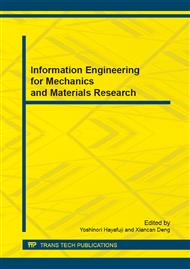p.136
p.141
p.146
p.152
p.159
p.165
p.172
p.176
p.181
Design of Virtual Assembly Sequence Planning System Based on Double Bases Cooperation Mechanism
Abstract:
Currently, the result of automatic assembly sequence planning shows bad practicality of engineering, and the assembly experience is not being fully utilized. For solving the problem, this paper introduces the double bases cooperating mechanism to aid the planning of the assembly process. By standardizing characteristic attribute of parts, the expert knowledge base that based on semantics is established. The expert knowledge base will assist the process of automatic assembly sequence planning. Desktop virtual reality technology is utilized for simulating the process of assembly operations. The status information of operations is fed back to the database for mining and learning, thus this progressive reasoning sequence meets the requirements of engineering, the final result of planning is stored into the database as an index case, it can provides a reference for subsequent similar assembly. Finally, the effectiveness of the method is verified by the example.
Info:
Periodical:
Pages:
159-164
Citation:
Online since:
September 2013
Authors:
Price:
Сopyright:
© 2013 Trans Tech Publications Ltd. All Rights Reserved
Share:
Citation:


